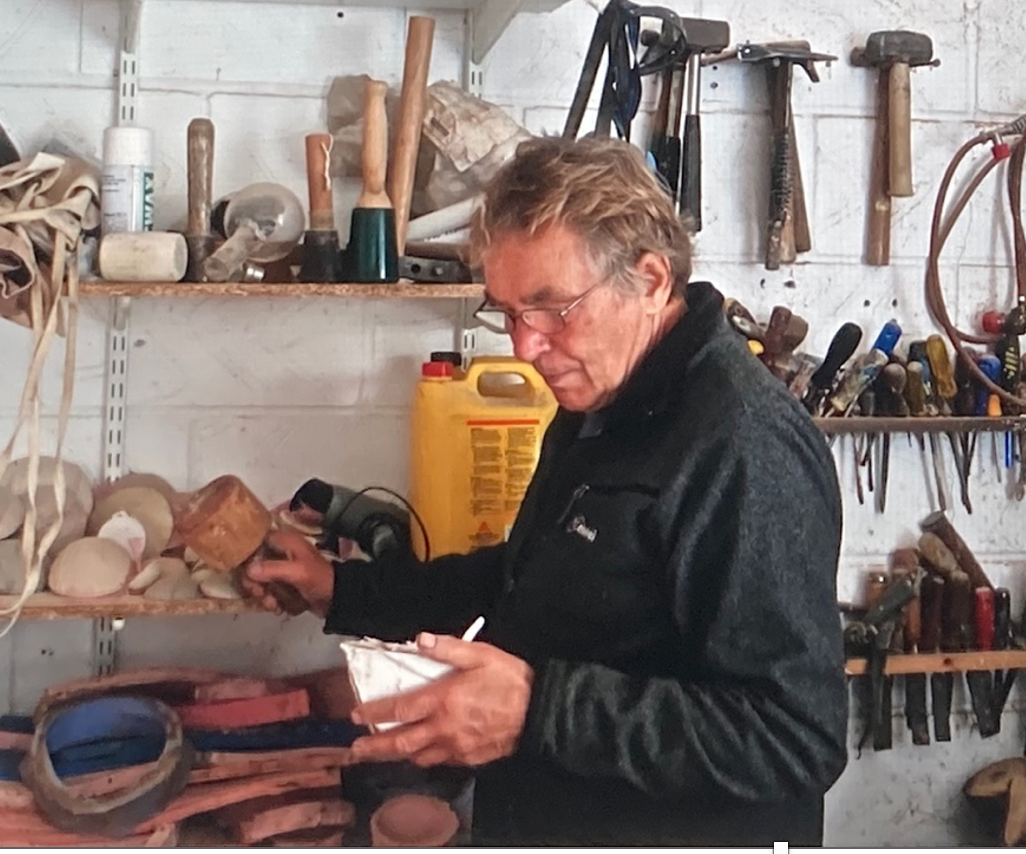Gordon Senior is a sculptor whose major themes are linked to nature and humans’ relationship and influence upon it. His sculptures identify frozen moments in time in nature. Currently, these might represent significant pauses in the growth of arable grains and plants (farm weeds) that have become part of our natural landscapes
In 2017 Gordon Senior returned to his studio in Norfolk having spent part of 15 years in the United States. There, he was chair and professor of sculpture at CSU Stanislaus in the Central Valley of California. Much of his work at that time was influenced by living and working in two countries. He showed a body of work from this period, ‘Tools of Unknown Use’ at Groundwork’s exhibition ‘On the Edge’ in 2019.
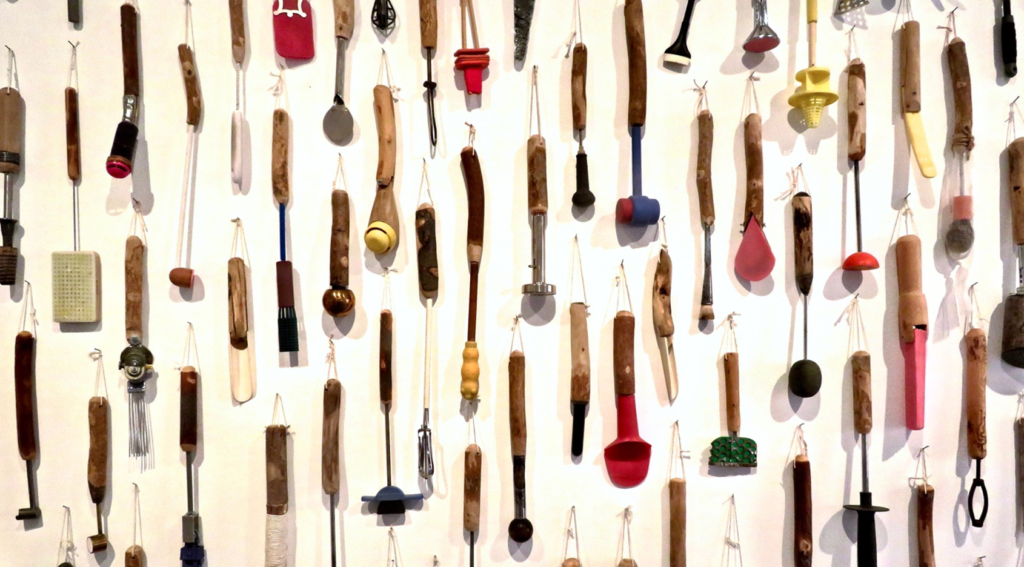
Of this work, Allison Harrington and Nicole Ruiz have written:
“It took Senior two years to function properly in America and the work Hand Tools spun out of that sense of displacement. ….. Hand Tools is a work of countless, functionless tools that evokes questions of wonderment, such as, “How do they move?” and “How do they function?” He couldn’t help but have the same feelings and questions about himself while adjusting to this new American culture. The viewer senses that in this new land, Senior himself feels like an instrument of unknown function, or perhaps that his purpose has yet to be discovered “
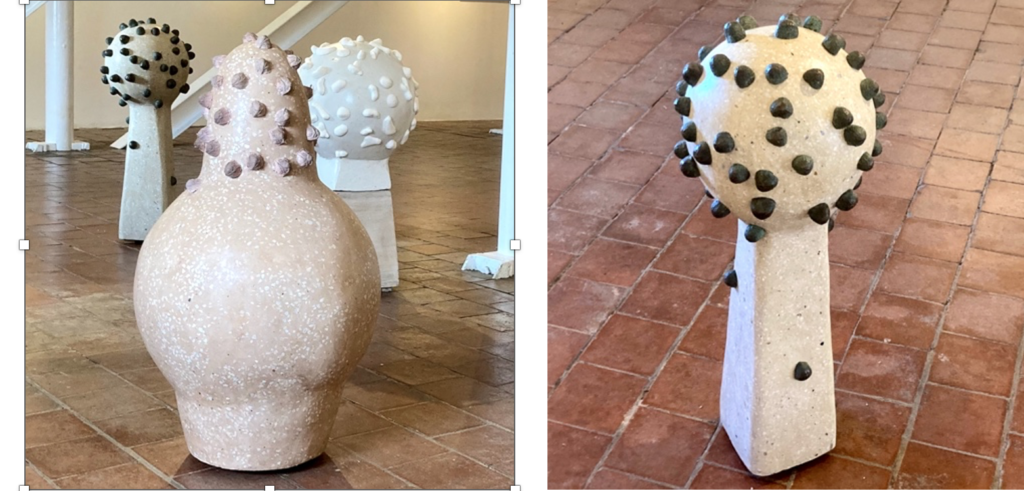
‘Strange Fruit’, on show in Taking Time, The Cut, Halesworth, Suffolk, 2024
Plants, seeds and animals
Though Gordon Senior is still preoccupied with journeys, voyages, and vessels, it is increasingly plants and seeds and animals which have come to the fore. His sculptures include casts of arable plants such as barley, wheat and oats. Often he features the root as well as the plant. Frozen moments in the plant’s lifecycle invite consideration of evolution, natural selection, cultivation, and the plants’ significance to us.
Gordon’s sculptures are concerned with a sense of place, geology, and the history of the changing landscapes that surround him. Consequently, Senior’s perspective on time is a very long one, measured in terms not of fleeting experiences but of whole lifecycles, evolutionary shifts and geological periods.
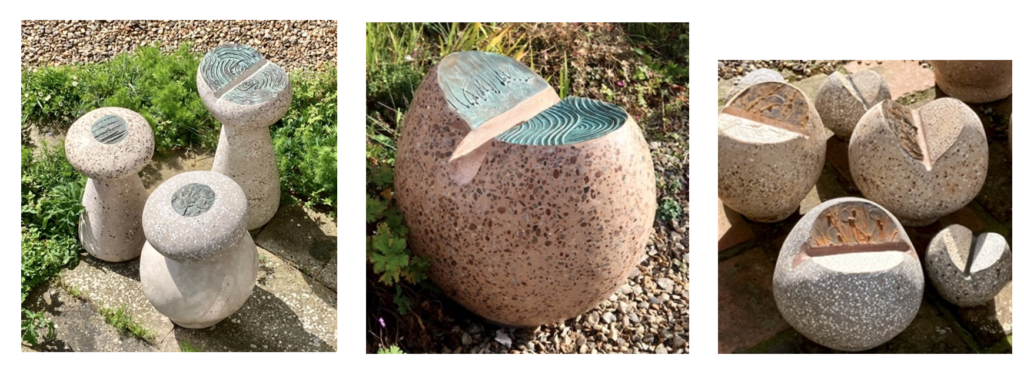
‘Harvest Stones’
Gordon Senior’s working methods
Gordon Senior’s working methods reflect these preoccupations. He uses a range of different coloured sands and chippings, which when added to cement becomes terrazzo. This is a technique, historically used by the Italians. He sands, polishes and hones each object to its final state. The labour lovingly expended on each object is both a means and an end in itself.
“Much of Senior’s work blurs the lines between man and nature. He gives us canoes full of fleeing hares and migrating birds made of maps. He frames nature in ways that are disconcerting and so sheaves of wheat are found carved in the center of stones…..Senior’s distrust of human intervention and conceptualization results in installations that behave in a manner at once casual and highly organized, but rarely like an art object. No plinths, no frames, no clearly defined edges. So far as it is possible these works occupy a space that is continuous with our own, the artistic and the human form a continuum that rehearses the rediscovery of the continuum, now lost, between the human and the natural.”
John Sumser, Professor Emeritus at California State University Stanislaus
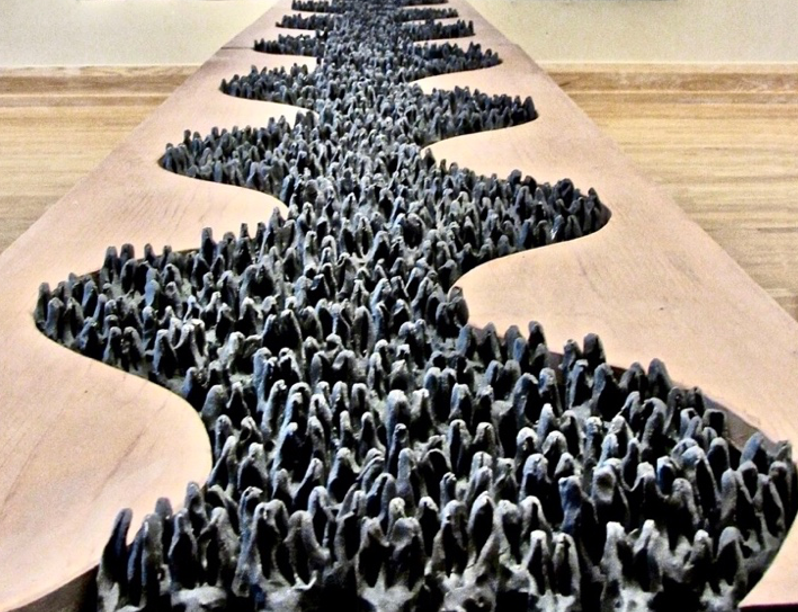
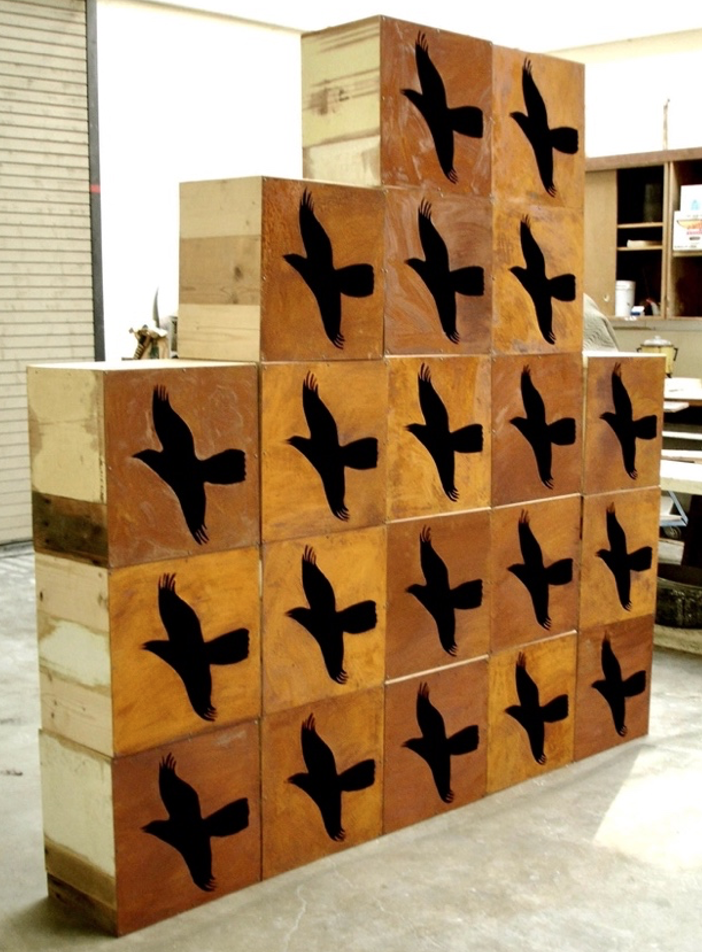
Left: ‘Hares Leaving’, Right: ‘Birds in Flight, Version 2’; on show in Hares, Birds and Butterflies, Carnegie Arts Center, Turlock, CA, 2017

